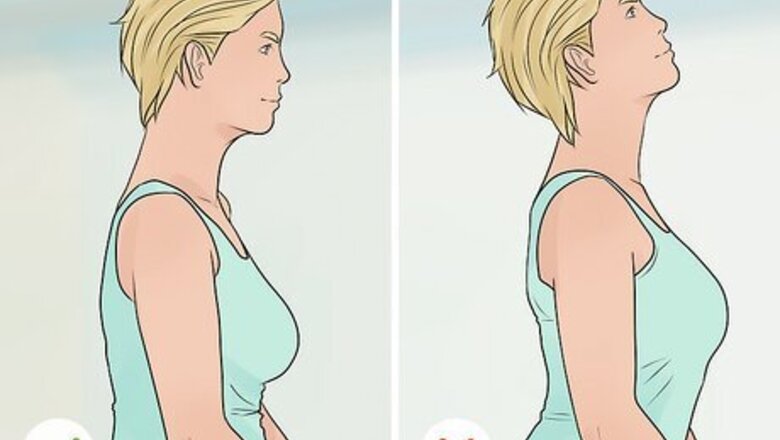
views
Taking Basic Measurements
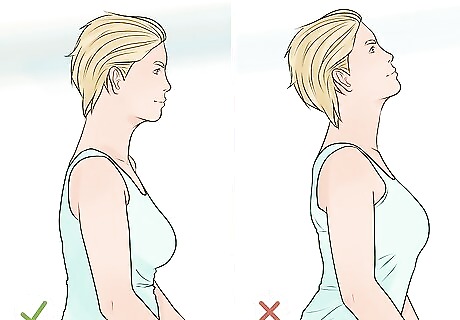
Keep your body relaxed while taking your measurements. Do not puff out your chest, suck in your belly, or flex your muscles. If you do any of these, the measurements will not be accurate and the shirt will not fit. The measuring tape needs to be loose enough to slide around easily. Consider having someone take your measurements for you. This will ensure that your body is straight while you are taking them.
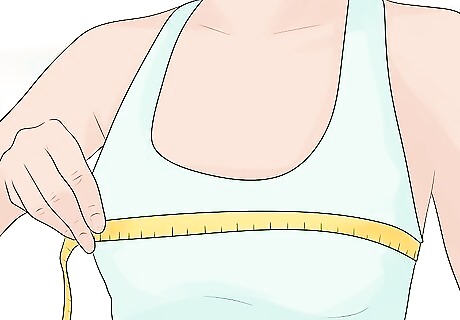
Measure around the widest part of your chest. Wrap a measuring tape around the widest part of your chest. Keep your body relaxed and do not puff your chest out.
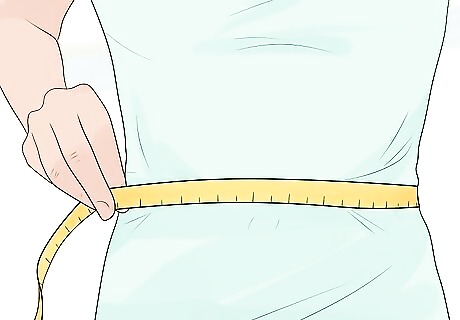
Measure the narrowest part of your waist. Once again, keep your body relaxed and do not suck your gut in. Wrap the measuring tape around your waist; keep it loose enough so that you can still breathe.
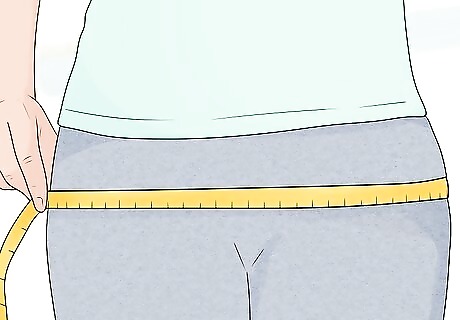
Measure the largest part of your hips. This is required for most women's shirts, although some men's shirts may also require this measurement. Simply wrap the measuring tape around the fullest part of your waist, including the buttocks.
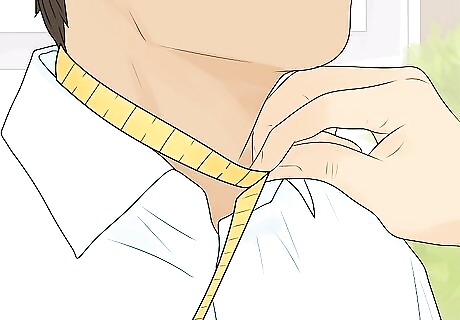
Take additional measurements for the collar and sleeve, if needed. If you are buying a man's dress shirt, you may need to take additional measurements for the collar and sleeve. This all depends on the store that you are buying from, as some brands have custom neck sizes and sleeve lengths. Collar: Wrap the measuring tape around the base of your neck. Keep it loose enough so that you can slide 2 fingers under it. Sleeve (casual): Measure from your shoulder down to your wrist, or wherever you want the cuff to be. Sleeve (dress or formal); Measure from the back-center of your neck, over your shoulder, and down to wherever you want the cuff to end.

Bring your measurements with you when you buy your shirt. Find the measuring chart provided by the company you are shopping at, and compare your measurements to theirs. Read the size that your measurements correlate to, then buy a shirt in that size. Keep in mind that different companies use different sizing charts, so your size may change depending on where you go. You could be a size "medium" at one company, and a size "large" at another. Paula J. Myers-McDevitt Paula J. Myers-McDevitt, Apparel Industry Veteran and Technical Design Authority Taking accurate body measurements is crucial for good pattern drafting and garment fit. With the wide range of body shapes and sizes that exist, standardized sizing simply cannot accommodate everyone. This is why learning to take proper measurements and draft patterns based on those measurements is so important for good fit.
Measuring a Dress Shirt
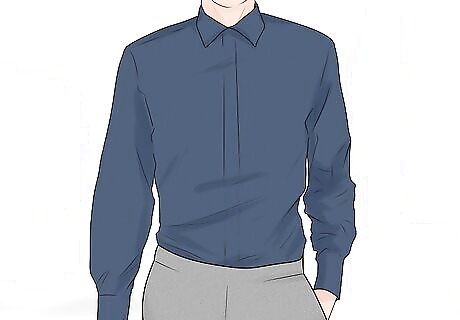
Find a dress shirt that fits you well. One of the best ways to measure for a dress shirt is to use one that you already own and that fits you the way you want the new shirt to fit you. Go through your closet, find a dress shirt, and try it on to ensure that it still fits you well. Take it off once you are done. This method assumes that you will be measuring a button up men's dress shirt. It may work for other styles of shirts too.
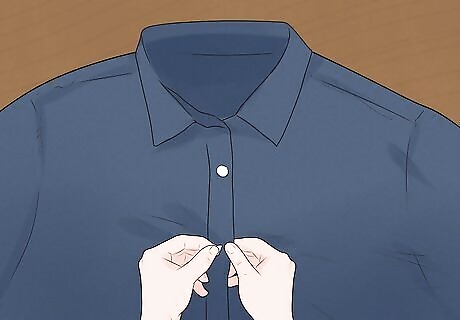
Close all of the buttons spread the shirt out on a flat surface. Find a flat surface, such as a table or hardwood floor. Spread the shirt out on that surface, then smooth out any wrinkles. Make sure that all of the buttons on the shirt are closed, including the collar and cuffs.
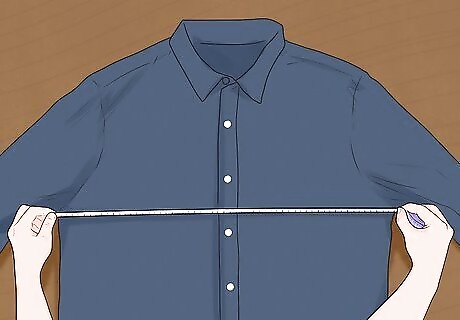
Measure just below the armpits for the chest size. Find the seams where the sleeves attach to the shirt. Place a measuring tape across the shirt just below these seams. Make sure that the end is aligned with the left side seam, then measure across to the right side seam. Write your measurement down.
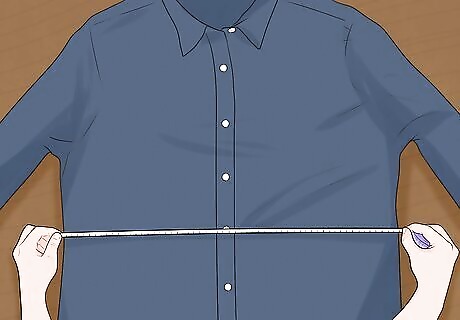
Take the waist measurement across the narrowest part of the torso. Even men's shirts taper towards the middle of the torso. Find the spot on your shirt where your waist would be, then measure across it, from the left side seam to the right side seam. This can be a little hard to find on men's shirts; it is more evident on women's shirts and fitted shirts.
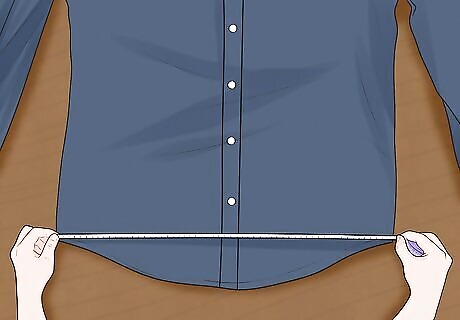
Pull the tape across the bottom hem for the hips. Find the bottom-left corner of the shirt, and measure across to the bottom-right corner. Make sure that you measure from seam-to-seam. Do not measure around the curved hem; measure straight across it. Some places refer to this as the "seat" measurement instead.

Take the length measurement in the back, from collar to hem. Flip the shirt over and smooth out any wrinkles. Place the measuring tape at the bottom edge of the collar, right where it connects to the shirt. Pull the measuring tape straight down towards the bottom edge of the hem, and record your measurement. If your shirt has a curved bottom hem, pull the tape down to the curved hem. Keep the measuring tape as straight as possible. If your shirt has a striped or checkered pattern, use the lines as a guide.
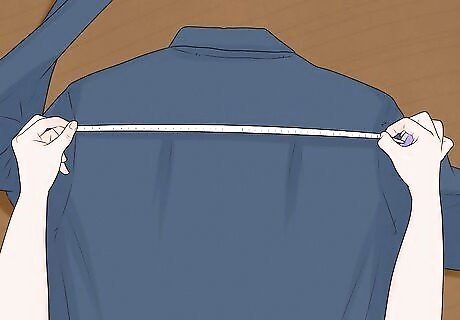
Take the shoulder width measurement in the back, right across the yoke. Keep the shirt spread out with the back facing you. Place the measuring tape at the left shoulder seam. Pull the tape across the yoke towards the right shoulder seam, and record your measurement. The shoulder seam is the area where the sleeve connects to the body of the shirt. Some places refer to this as the "yoke" measurement instead.
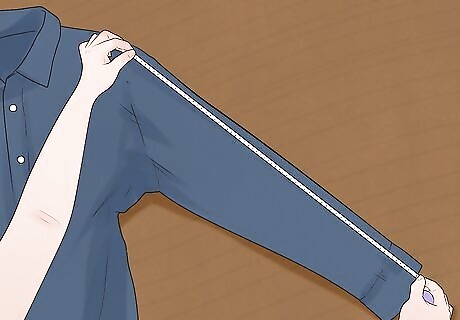
Measure from shoulder seam to cuff for the sleeve measurement. Place the end of the measuring tape at the shoulder seam where the sleeve starts. Pull the tape towards the bottom edge of the cuff and take your measurement. Some places will require you to start the measurement at the back-center of the collar instead.
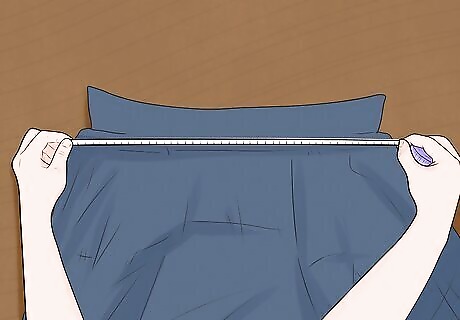
Spread the collar and cuff flat before taking their circumference. Open up the collar, and spread it flat. Place the measuring tape against the stitch holding the button to the fabric. Pull the tape across the collar towards the buttonhole. Record the measurement at the center of the button hole. Repeat this step for the cuff. Some places will require you to measure to the outside edge of the cuff buttonhole instead. If you are measuring a short sleeve shirt, simply measure across the hem, from seam to folded edge.
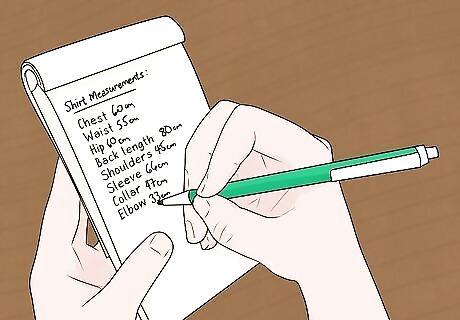
Record anything else that the tailor or seamstress requests. The above measurements are the most common and basic measurements. Some tailors and seamstresses may require additional measurements, such as the bicep, elbow, and forearm. Listen or read their instructions, then measure your shirt accordingly.
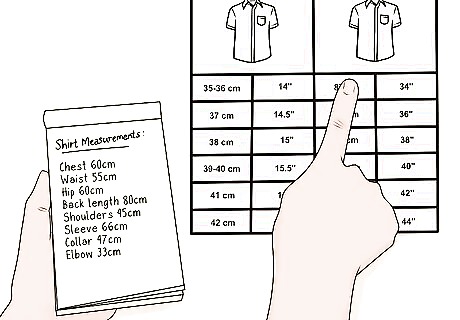
Take your measurements with you when you go shopping. Most places will have a sizing chart. Compare your measurements to the ones on the chart to find out what size you are, then buy a shirt in that size. Keep in mind that different companies may use different sizing charts; you could be a "medium" at one store, and a "large" at another.


















Comments
0 comment